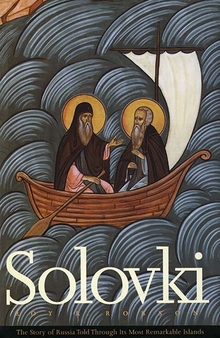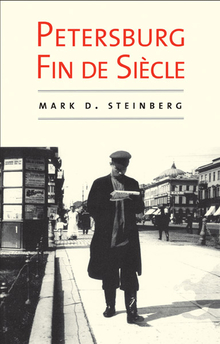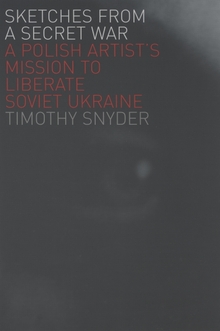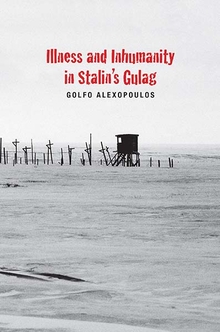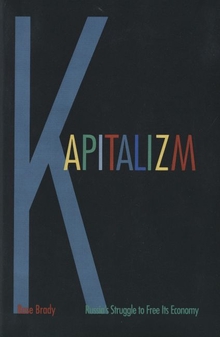Solovki
WARNING
You are viewing an older version of the Yalebooks website. Please visit out new website with more updated information and a better user experience: https://www.yalebooks.com
Roy R. Robson
Located in the northernmost reaches of Russia, the islands of Solovki are among the most remote in the world. And yet from the Bronze Age through the twentieth century, the islands have attracted an astonishing cast of saints and scoundrels, soldiers and politicians.
The site of a beautiful medieval monastery—once home to one of the greatest libraries of eastern Europe—Solovki became in the twentieth century a notorious labor camp. Roy Robson recounts the history of Solovki from its first settlers through the present day, as the history of Russia plays out on this miniature stage. In the 1600s, the piety and prosperity of Solovki turned to religious rebellion, siege, and massacre. Peter the Great then used it as a prison. But Solovki’s glory was renewed in the nineteenth century as it became a major pilgrimage site—only to descend again into horror when the islands became, in the words of Alexander Solzhenitsyn, the “mother of the Gulag” system.
From its first intrepid visitors through the blood-soaked twentieth century, Solovki—like Russia itself—has been a site of both glorious achievement and profound misery.
Roy R. Robson is associate professor of history at the University of the Sciences in Philadelphia.
“An extraordinary book. All of the great traumas of Russian history viewed through the lens of a tiny island: Ivan the Terrible, the Great Schism, Peter the Great’s war with Sweden, the Decembrist Revolt, the Crimean War, the long shadow of Stalin, and the shock of recovery in a post-Communist world. For the rocks of Solovki this history was a blink in the divine eye, but for the rest of us it is a remarkable journey.”—Caryl Emerson, Princeton University
“Roy R. Robson tells a gripping tale of suffering and miracles, sinners and saints against the background of a fortress-like island monastery in Russia’s far north, that for much of its existence also served as a prison or a labor camp. The small details of everyday existence and the big events of Russian history from the fifteenth century to the twenty-first —reform, invasion, war, revolution—are seen from the edge, through the eyes of monks, peasants, pilgrims, prisoners and tourists. This is a highly original work, combining careful scholarship with vivid narrative, which will captivate both the specialist historian and the general reader.”—Lindsey Hughes, author of Peter the Great: A Biography
"The first single-volume history of the islands from the founding of a monastery there in 1429 to the present. . . . Aimed at the general reader, the book offers a lively and fast-paced narrative comprising seventeen chronologically organized chapters packed with poignant vignettes that capture both the glory and misery that was Solovki—and Russia. . . . Making effective use of long quotations from contemporary documents, Robson fashions a riveting account of piety, rebellion, imprisonment, pilgrimage, and descent into the Gulag, with a cast of characters that occupy both the national and local stages. He succeeds admirably in keeping the reader's interest and in crafting a larger narrative within his deceptively local one."—Donald J. Raleigh, Historian
"[Robson] has carried through a work of immense scholarship, but his distillation of the result makes his book easily accessible to the non-specialist."—Michael Bourdeaux, Journal of Ecclesiastical History
“Mr. Robson’s scholarly yet thoroughly readable book brings to life turbulent chapters of Russian and Soviet-Russian history. It also highlights the peculiarly Russian blend of brutality and idealism exemplified by life on these islands.”—Paul Hollander, New York Sun
“Robson’s chronicle . . . is intimate enough to capture Solovki’s many sad ironies, and expansive enough to consider its place in Russian history. The result is an epic drama of spiritualism and savagery, set in one of the world’s most extreme frontier territories.”—New Yorker
"Engagingly descriptive. . . . [A] well-told story. . . . Because of its wide range of topics and the potential it offers for facilitating discussion, this book will find an eager audience among students of Russia's political, cultural, and religious history, and therefore is highly recommended for undergraduate and even some graduate classes. Not only will students enjoy the read, but they will also be left with much to ponder. . . . A very rich book."—Vera Shevzov, Russian Review
"A wonderful 'story of Russia', at once moving, even inspiring, and informative."—James Cracraft, Slavic Review
“Roy R. Robson’s fascinating book presents a kaleidoscope of its past, with all its dramatic changes through the ages.”—Michael Bourdeaux, The Tablet
“Hauntingly beautiful. . . . Robson captures brilliantly the absurd flavour of those years. . . . Robson carries it off [writing about the Soviet years as part of Russia’s destiny] with aplomb, showing convincingly both how the cruelty of Soviet days differed from that of Tsarist times and how it continued patterns set centuries earlier.”—Vanora Bennett, The Times (London)
"Roy Robson's new book offers a fascinating history of one of Russia's most famous and infamous monasteries. . . . Well-researched and extensively documented. . . . The book is particularly descriptive and atmospheric, vividly evoking the monastic world and its severe yet serenely contemplative environment. . . . An important and valuable contribution to the history of Solovki. It is the only comprehensive history of the monastery available in any language, and in addition to masterfully assimilating many obscure published and some unpublished sources, it is simply a great read. Robson has a very engaging writing style that makes the narrative readily accessible to a diverse audience ranging from general reader to specialist. That is perhaps the book's greatest achievement: to make the gripping story of Solovki more widely known."—Michael A. Pesenson, Slavic and East European Journal
Publication Date: April 15, 2011
30 b/w illus.

